November 10th, 2022

T.S. Harris, “On the Slopes,” oil, 40″ x 40″
Approximately 180 miles off the coast of the Hawaiian island of Kauai, a seemingly random buoy bobbing in the Pacific Ocean is busy influencing travel plans to Park City for skiers all over the world.
The “Powder Buoy,” as it’s affectionately known, has a cult following and a respected track record for Park City-loving skiers who are yearning for fresh powder ski tracks. As ski enthusiasts and Park City locals, we decided to learn more about this puzzling phenomenon that may just help you, our Gallery MAR collectors, plan your next ski trip to Park City.
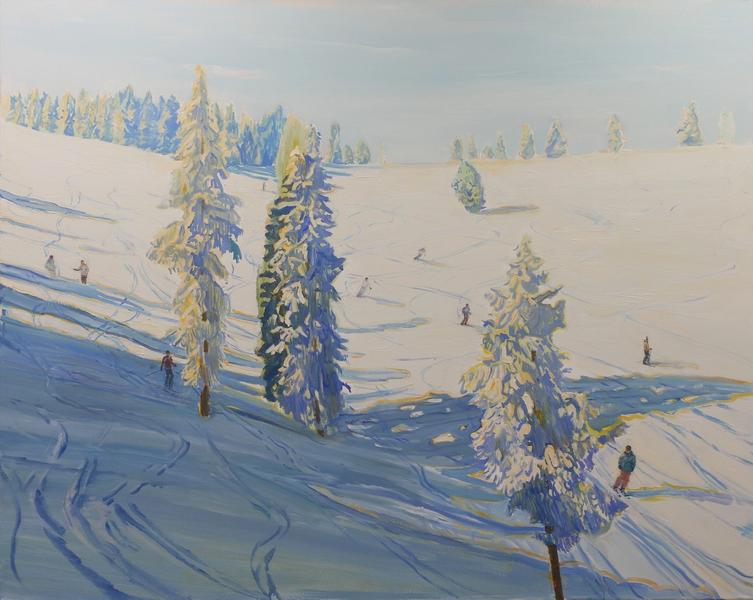
Jonathan Julien, “Miel Blanc,” oil, 48″ x 60″
The invaluable data on upcoming winter storms in the Wasatch Range is showcased on the Powder Buoy account, run by local Wasatch skier, Mike Ruzek. Ruzek transplanted to Utah to attend the University of Utah and to ski Park City’s world famous powder. He, like many of us Park City locals, came for the skiing and stayed for every other wonder this city has to offer.
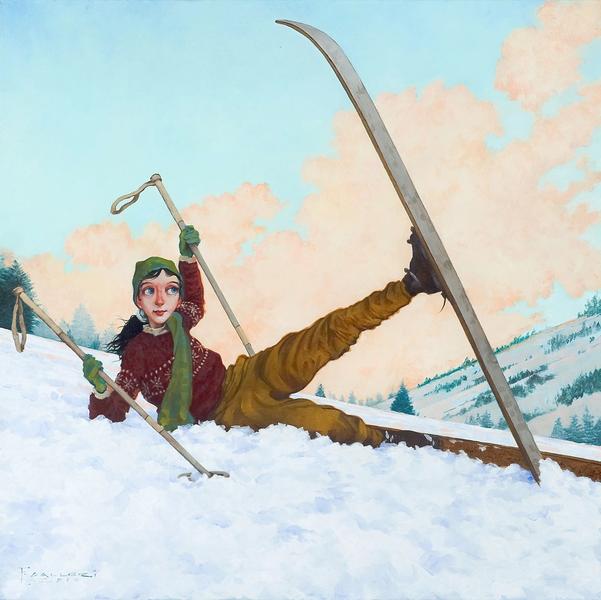
Fred Calleri, “Now What?” oil, 30″ x 30″
In 2004, Mike Ruzek was working with a client of his who lives part-time in Hawaii and part-time in Park City. As an adamant surfer and skier and a retired engineer, this client happened to observe that every time there were massive surfing swells in Maui, the Wasatch Range would be hit with significant winter storms approximately two weeks later, almost like clockwork. This client mentioned this observation to Ruzek who was intrigued enough to look at the data for himself.
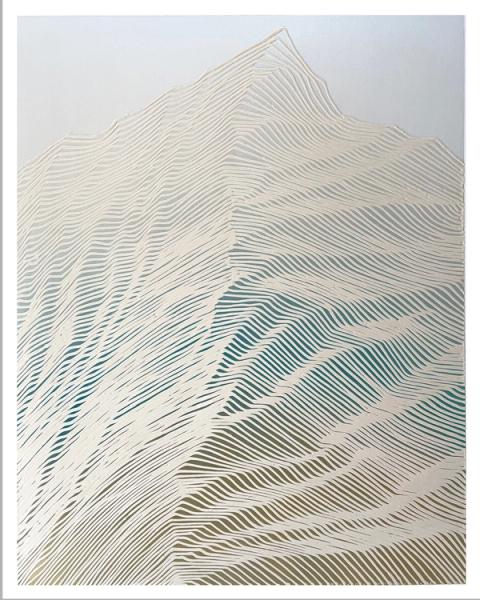
Havoc Hendricks, “My Pleasure,” mixed media, 60″ x 48″
After researching this phenomenon himself, Ruzek saw for himself the science behind this marvel. He learned how, periodically, low pressure systems will swirl down from Alaska or come across the Pacific from Japan. These low pressure systems will cause the air and water pressure to become out of balance, which can cause the sea to rise between 5-18 ft. above normal levels. Floating off the coast of Hawaii, there are a multitude of anchored buoys. When the sea levels rise with these low pressure systems, these buoys will “pop.” Whenever a buoy “pops” the information is linked to and recorded by the National Data Buoy Center on the National Oceanic and Atmospheric Administration’s (NOAA) website.

Warren Neary, “Watch This…,” oil, 40″ x 50″
For years, surfers have been able to determine when and where the best swells are coming in from the ocean based on these “buoy pops.” By tracking this information, surfers in Hawaii know just when to paddle out for the best surfing conditions. What Mike Ruzek and his client discovered was that two weeks after a “buoy pop,” a winter storm often hits the Wasatch Range in and around Park City. Specifically, it appeared that the “Hawaii 1” buoy provided the most reliable information for Park City and the rest of the Wasatch Range.
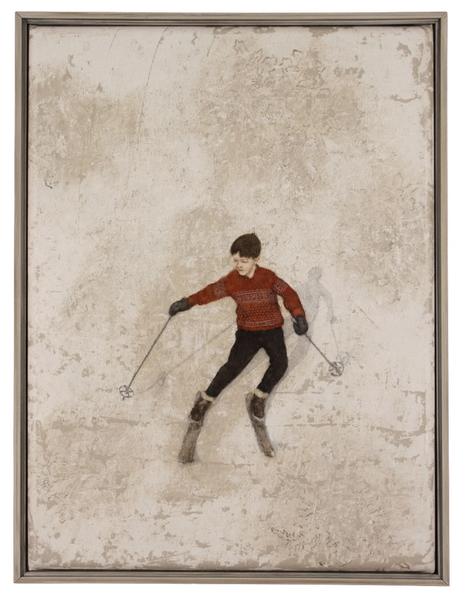
Pamela Murphy, “Downhill,” oil, 32″ x 24″
In the beginning, Mike Ruzek began to track this information solely for the use of he and his friends. Knowing when snow storms may hit helped them to decide on the best time to schedule their days on the mountain. As free time becomes less available and as we accumulate more and more responsibilities, it becomes difficult to allocate time for ourselves. Ruzek saw how this buoy winter storm prediction could offer people the gift of organizing a better work/life balance by letting them plan out the best days for working and the best days for skiing.
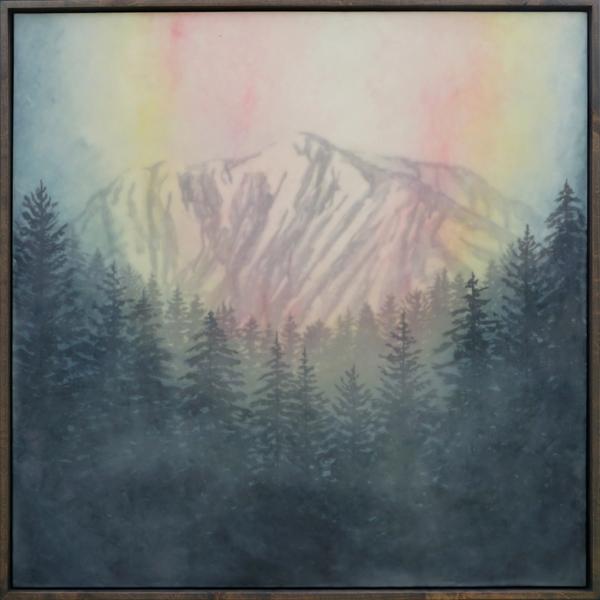
Bridgette Meinhold. “Apparent,” encaustic, 30″ x 30″
Mike states that over the years, the buoy has boasted rather incredible accuracy: a four year review indicated an accuracy percentage rating in the low 80s. This is a remarkable percentage coming from a buoy off the coast of Hawaii. Discrepancies in this buoy’s accuracy were almost always due to a “ridge” of a high pressure system sitting over the state of Utah. These high pressure systems pushed the winter storm systems to the north in Wyoming where our friends in Jackson Hole reaped the spoils.
Even so, this phenomenon reinforces the validity of the Powder Buoy: although it cannot predict whether a high pressure ridge will sit over Utah, it can, somewhat reliably predict a winter storm that may just give us the Greatest Snow on Earth.
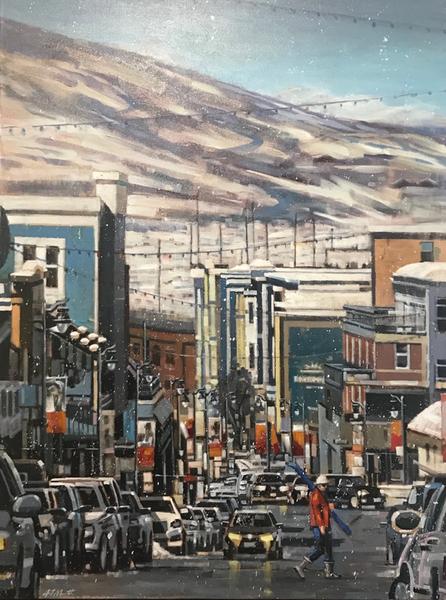
Aaron Memmott, “Apres,” oil, 40″ x 30″
So if you’re planning a trip to Park City this winter, consider consulting the Powder Buoy. It may just help you make sure this next trip is the ski trip of a lifetime. Once you’ve made it back down the mountain this snow season, we hope to see you après-ski at Gallery MAR for art as fresh as the powder.
Written by Veronica Vale
 The Art of People - Capturing Sonder
The Art of People - Capturing Sonder Carving the Canvas: Ski Season Through the Eyes of Our Artists
Carving the Canvas: Ski Season Through the Eyes of Our Artists Picture This: Horsepower
Picture This: Horsepower